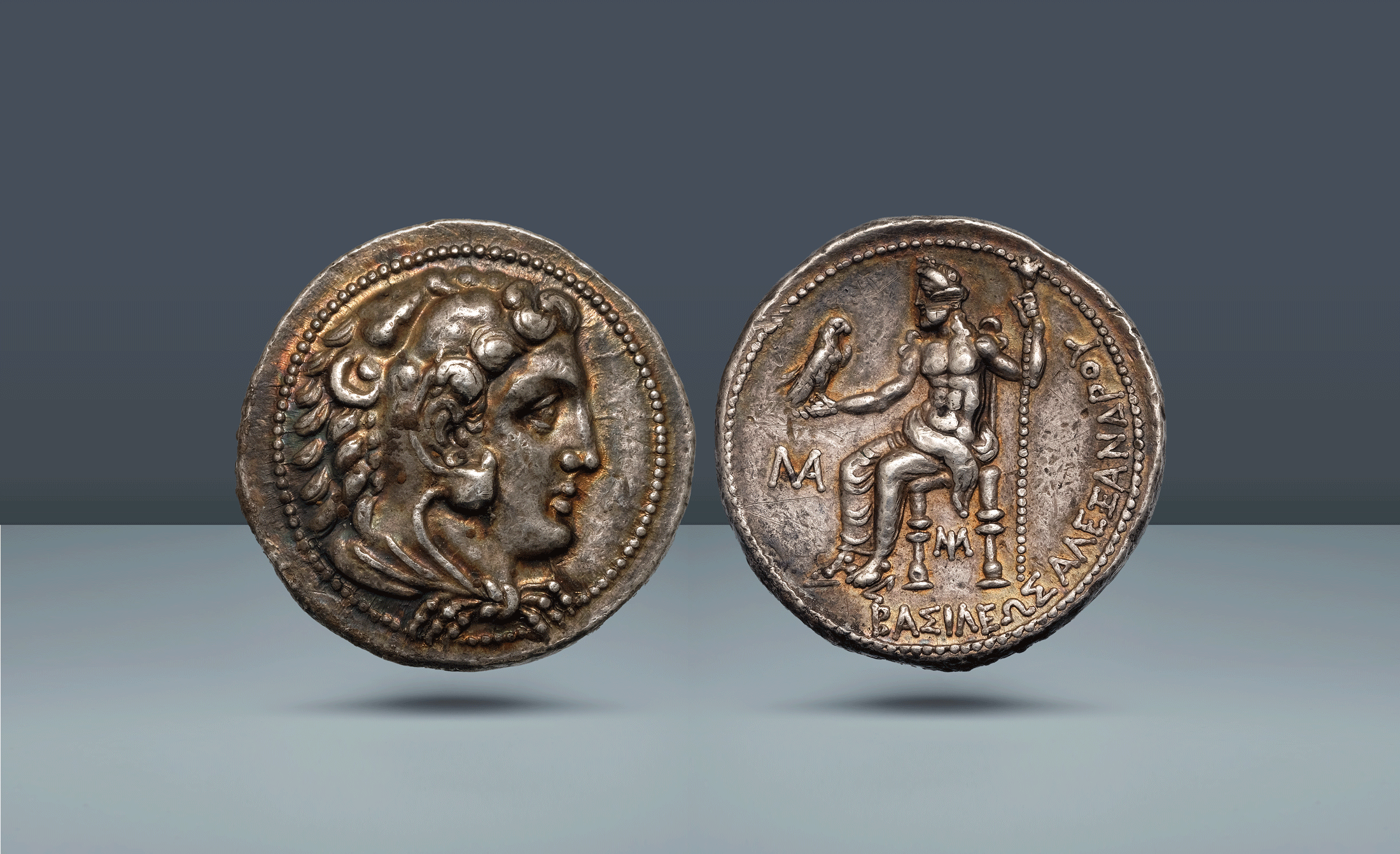Kingdom of Macedonia, Phoenicia. Alexander the Great (posthumous), 356-323 BC, Myriandros, c. 323-317 BC
Kingdom of Macedonia, Phoenicia. Alexander the Great (posthumous), 356-323 BC, Myriandros, c. 323-317 BC
AR Tetradrachm, 17.11g (28mm, 9h).
Head of unbearded Heracles r., wearing lion skin. / BAΣIΛEΩΣ - AΛEΞANΔPOY Zeus, nude to waist, wearing himation, seated l. on diphros, holding long sceptre with his l. hand, eagle on his outstretched r. hand; in field l. monogram MA, below seat, monogram MI
Pedigree: Ex Hirsch 293 (2013), lot 2208. Nomos 17 (2018), lot 99. Künker 376 (2022), lot 4497. From the "Alexander the Great" collection.
References: Price 404, 3235; SNG Oxford 2945
Grade: High relief with sharp strike. A scuff mark on the face of Herakles on reverse. Iridescent toning and lustrous surfaces. EF
gk2041
Scroll down for more information about this coin.
The ancient mint at Myriandros, a coastal city in Cilicia (modern-day İskenderun, Turkey), played a modest but notable role in the regional numismatic landscape during the Hellenistic and early Roman periods. Myriandros held strategic importance due to its position along key maritime trade routes and the Syrian coastal highway, making it an attractive location for minting coinage to support commerce and local governance. Clearly a relatively minor mint, Prices’ identification of the mint by using subtle iconographic and stylistic markers such as the rendering of Zeus’s throne and the posture of the eagle was “daring”, especially since the local engravers drew stylistic inspiration from various neighboring cities. Interestingly, Price also states that this mint most likely ceased production shortly after this coin was struck, probably around 315 BC.



